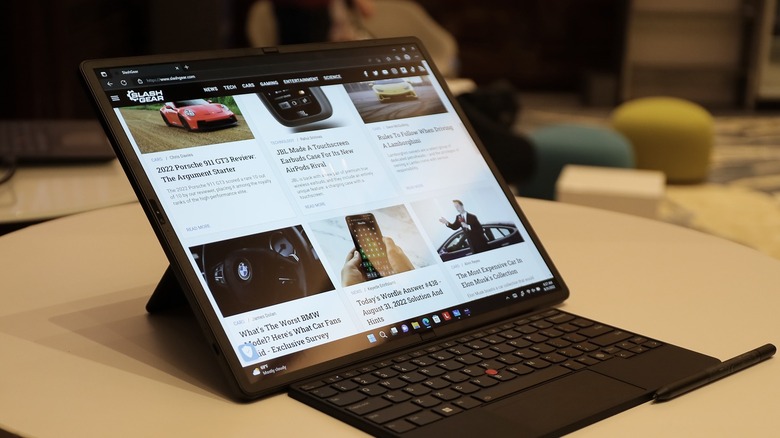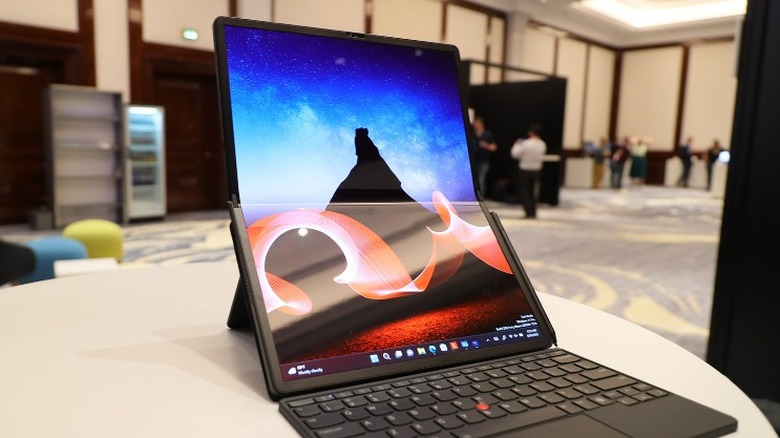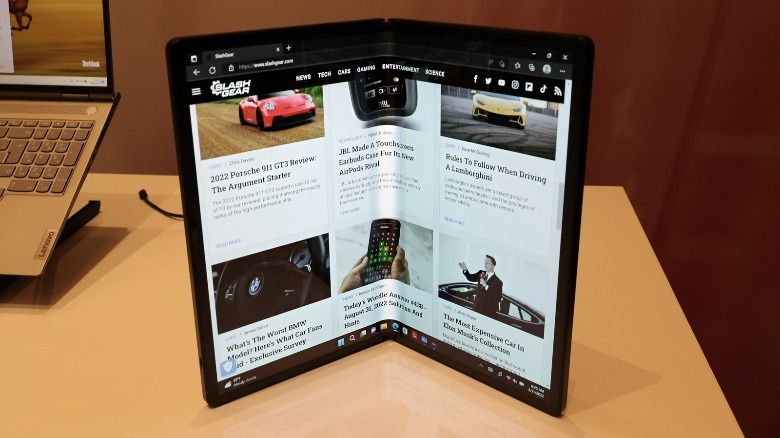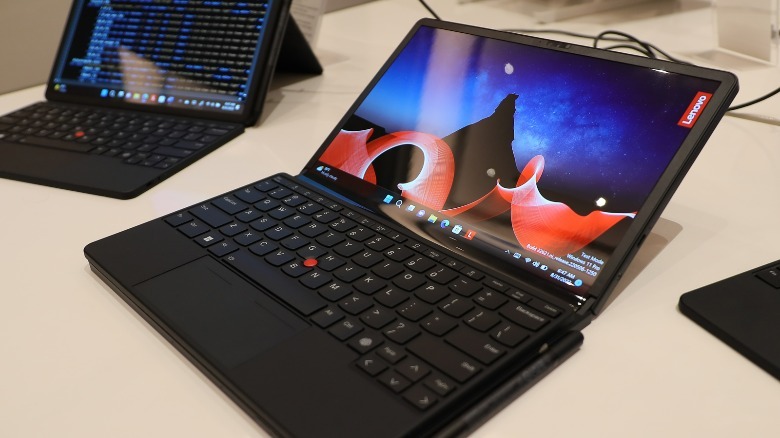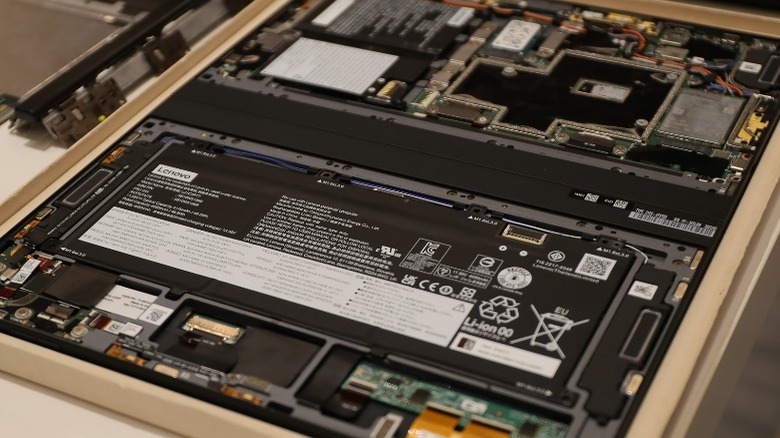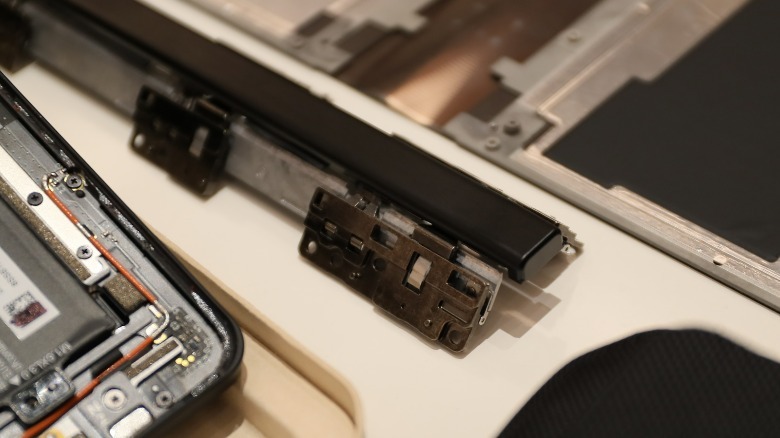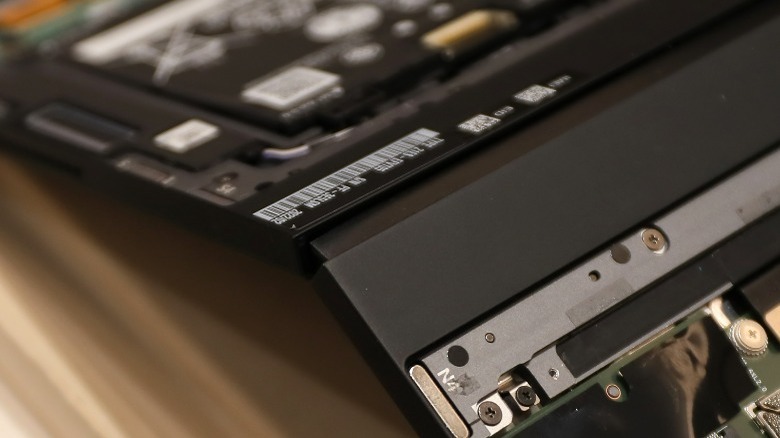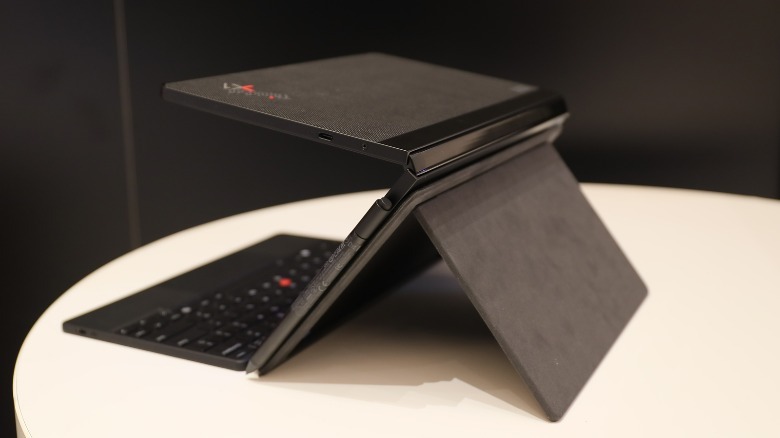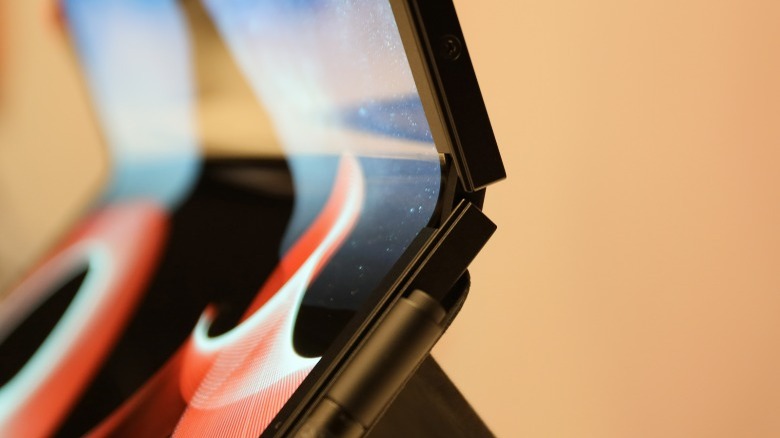Lenovo ThinkPad X1 Fold (2022) First Look: This Feels Radical
Lenovo's latest foldable display device feels like the real deal. Despite the fact that we've seen quite a few foldable display devices released to the public over the past few years, they haven't all passed the smell test. They may have been able to reach their minimum certification requirements, sure, and they may have worked just fine for early adopters, but they haven't all reached beyond the point of bleeding edge, futuristic tech. In short, beyond that point where the consumer is meant to make a purchase primarily for the opportunity to own one of the first market-ready and functional foldable displays on the market, and into a place where something foldable actually makes more sense.
Now, with the ThinkPad X1 Fold, it feels like Lenovo has a device that's ready to work for the average, real-world consumer. This laptop has features that are intuitive, clever, and helpful, and Lenovo has painted a picture of the way users will work and play with this device that looks unexpectedly — and surprisingly — realistic, given the technology in the mix.
Perhaps most important of all, this is a device with a foldable display that does not feel fragile. Fragility should never be an expected feature of a smart device of any sort — even one that has a display panel that folds in half. I'm a strong believer that we ought to be able to depend upon the devices we buy, especially when we're asked to consider hardware with features that are relatively new. That goes doubly for new devices that cost large sums of money in exchange for access to the latest and the greatest.
Display and keyboard
The Lenovo ThinkPad X1 Fold offers a foldable 16.3-inch (2024 x 2560 pixel) OLED display. It supports a Wacom stylus right out of the box, or you could just use your finger thanks to On-Cell Touch technology. In short it's a nice display, and a flexible one — no pun intended — whether you're doing work tasks or watching videos.
The display can be used flat — as a touchscreen tablet — or folded in several ways. You can use it unfolded out flat in either landscape or portrait mode, with or without its included keyboard. The latter can function detached or attached to a fold-out kickstand that also comes with the device.
Alternatively, you can use the Lenovo folded partially, like a book. I could see myself doing that when using the ThinkPad X1 Fold to read novels or comic books. It can be set up on its side when it's folded like this, standing up without the aid of a kickstand.
Adding to the flexibility, you can rotate it 90 degrees and use it folded like a laptop with an onscreen keyboard, or by attaching the physical keyboard magnetically to the lower half. This effectively turns the device into a 12-inch ultraportable notebook, switching the lower half of the touchscreen off while the keyboard is in place.
Lenovo's bundled keyboard is nice, too. In fact, it's very much like the keyboard included on ThinkPad X1 notebooks released over the last few years. It has a standard touchpad as well as a Trackpoint — the little red nub you see in the middle of the keyboard – a ThinkPad classic.
Interesting options and hidden features
When a Lenovo representative presented this device to us at IFA 2022, I thought he'd misspoke when he said one of the device's batteries was "optional." The new ThinkPad X1 Fold comes with at least one big battery (with 48Whr capacity, per Lenovo), but the device can be ordered with an additional battery (adding a further 16Whr battery life).
The first battery is installed on one side of the hinge, while the second battery is installed on the other. We were given the opportunity to see the insides of this device, including the batteries and the hinge.
The hinge has an interesting secondary function that the end-user might never actually realize — and that's entirely by design. Above you'll see the two sides of the device meeting in the middle with two pieces of dark gray metal in-between. Once these pieces meet, they act as a heatsink for both sides of the ThinkPad X1 Fold. Below, you'll see the back of the hinge, unattached from the rest of the notebook.
It's a clever solution to handling heat, and not the only smart decision Lenovo has made. As standard, you get both Wi-Fi 6E and Bluetooth 5.2, but there's also the option of an embedded 5G modem. It'll work with sub-6 5G only (no mmWave business here), but it has LTE support as well. Though WWAN-enabled laptops are still a relative rarity — Lenovo being one of a few manufacturers to keep offering the option — it's undoubtedly useful to be able to get online regardless of WiFi coverage, and without draining your smartphone battery from an extended period of tethering. If I was ordering a ThinkPad X1 Fold, I don't think I'd skip the 5G option.
More on the hinge
Above you'll see the hinge open (again in a torn-down showing of the device), and you'll notice the two pieces of metal are no longer touching. This image also shows the strength of the hinge as it holds the weight of the device up under its own power. Another image, below, shows how the device can fold down to a surprising degree before it starts to submit to gravity. If the finalized design for this machine has a hinge with the same physical properties as this one — this being a pre-production unit — I suspect Lenovo will be in good shape.
It's important to note that, despite the hinge's ability to hold the display at a wide variety of angles and ways, it's not difficult to maneuver or adjust. I'd go so far as to say that it feels like the perfect balance between looseness and tightness. Not that you'd ever need the device to be sitting at either one of these angles, but it's nice to know you could. Maybe we'll find a reason to compute around corners or over fences.
You'll also see the full set of parts in the image above — the foldable computer, the stylus, the kickstand, and the keyboard. All folded up, they're surprisingly tiny and transport-friendly, too. It's easy to imagine that a person who uses this device in the future will have difficulty adjusting back to a standard sort of laptop. In the same way smartphone users tend to expect that other displays are touch-capable, it may be that the average consumer one day expects any flat device with a display to be able to fold at least once without damage.
Ready to use
It's not as if there haven't been any foldable display-toting devices released with real-world use in mind. But, based on what we've seen and experienced with this new Lenovo ThinkPad X1 Fold, it feels like Lenovo's at a point where they really mean business. They have a foldable display device that's not just novel, it's ready to be used long-term.
It folds down small, opens up big, and it runs up to Windows 11 Pro. It feels robust, user-friendly, and comes from an established brand known for making reliable machines. It comes with a Wacom stylus, a keyboard, and a kickstand, all of which feel like integral parts of the overall package. It's an important distinction — we've seen our fair share of notebooks and tablets released in the last decade with add-on accessories that felt like they were designed in a vacuum. This device seems to have been the result of a truly well-conceived industrial design process.
Of course, we'll need to wait until we get the chance to review this device in its final consumer release iteration before we can make any final judgement. The version we're looking at here at IFA 2022 is a pre-production model, and we always want to make sure we're getting time out in the real world before we can really, truly call this a winner.
The competition might be fierce, soon
Lenovo isn't the only company attempting to make foldable display-toting laptops. The device most directly comparable with the Lenovo ThinkPad X1 Fold that's anywhere near the mass market is the ASUS Zenbook 17 Fold OLED. ASUS may not have a keyboard with a red nubbin on it, but it's been in the making for a few months, and ASUS is also no slouch when it comes to high quality computer hardware.
One big advantage the ASUS Zenbook 17 Fold OLED has over the Lenovo is the fact that it's already available for purchase, with stock hitting retailers imminently, while Lenovo's expected release date is "by November 2022." The good news for Lenovo fans is that the price of the ASUS machine kicks off at a hefty $3,500, while the ThinkPad X1 Fold should start out closer to $2,500.
Will this be a device like the Galaxy Note, a device that spurred an industry-wide move toward larger phones? Or will it be another Apple laptop touchscreen deal where, until Apple does it, it's not viewed as a necessity? These things are tough to predict, but it's worth noting that Samsung has its Galaxy Z Flip 4 and its Z Fold 4 out in the wild, each with several generations under their belt already. Xiaomi has a second generation foldable and Huawei has a wild outie foldable in the mix. It begs the question: just how long might it be before we see these phone companies turn their attention to the larger cousins of their handheld foldables?
